Stainless steel sinks are a popular and stylish choice for modern kitchens. They offer durability, ease of maintenance, and a sleek appearance. However, despite their name, stainless steel sinks are not completely immune to rusting. Over time, even the best quality stainless steel sinks may develop rust spots, which can be unsightly and even cause damage to the sink.
If you’ve ever noticed rust spots on your stainless steel sink, you’re not alone. Rusting is a common issue that many homeowners encounter, and it can be frustrating to deal with. In this blog post, we’ll explore the reasons why stainless steel sinks can rust, the types of rust that can occur, and the best ways to prevent and remove rust from your sink. We’ll also debunk some common myths about stainless steel sinks and rust, and provide tips for keeping your sink looking its best. So, if you’re tired of dealing with rust on your stainless steel sink, read on for some helpful advice and insights.
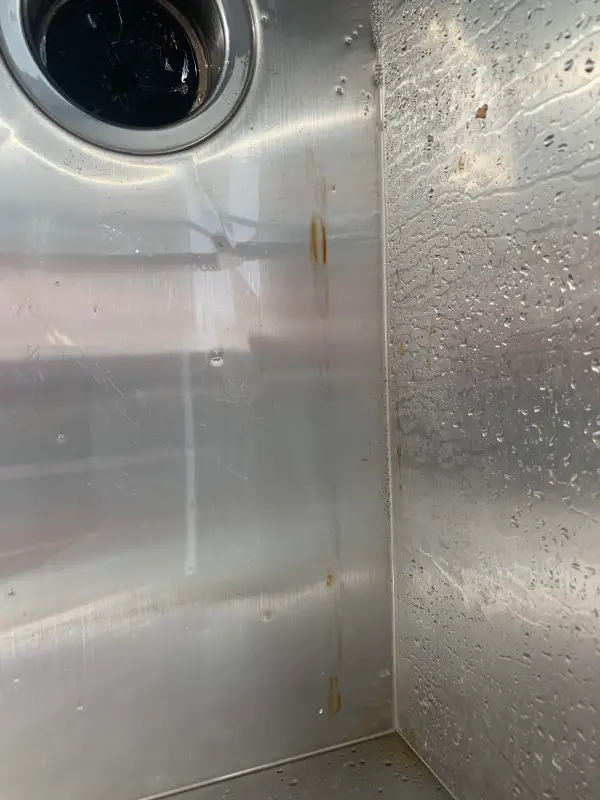
Stainless Steel Sink Rusting: Overview
Firstly, let me say that I love my stainless steel sink. It’s so sleek and modern, and it’s incredibly durable. However, I was so disappointed to see rust spots starting to appear. I learned that even the highest quality stainless steel can rust due to factors like water quality, exposure to certain chemicals, or even just normal wear and tear over time.
Thankfully, there are some fantastic products and methods available to prevent and remove rust from your sink. I’ve tried a few different rust remover sprays and they work like magic! And, for prevention, I’ve started wiping down my sink regularly with a mixture of water and vinegar, which helps to remove any buildup that can cause rust to develop.
Overall, while the idea of a stainless steel sink rusting may seem discouraging, there are definitely ways to combat this issue and keep your sink looking as good as new. Trust me, you won’t even remember those pesky rust spots once you’ve tried out some of these solutions!
Solving Stainless Steel Sink Rusting – Methods in Comparison
Stainless steel sinks are a popular choice for modern kitchens due to their durability and sleek appearance. However, even the best quality stainless steel sinks can develop rust spots over time, which can be unsightly and cause damage to the sink. In this guide, we’ll explore different methods for solving the issue of stainless steel sink rusting and provide a comparison of the pros and cons of each method.
The problem with stainless steel sink rusting is caused by a variety of factors including water quality, exposure to certain chemicals, or normal wear and tear over time. To combat this issue, there are several methods available:
- Rust Remover Sprays: These sprays are designed specifically for removing rust from stainless steel sinks. They work by breaking down the rust and making it easier to wipe away. Pros: Quick and easy to use, effective at removing rust. Cons: May contain harsh chemicals that can damage the sink and surrounding surfaces, may require multiple applications to fully remove rust.
- Baking Soda and Vinegar: This natural cleaning method involves creating a paste of baking soda and water, applying it to the rust spot, and then using a cloth dipped in vinegar to scrub the area. Pros: Non-toxic, inexpensive, and effective. Cons: May require significant elbow grease to remove rust, can be messy.
- Lemon and Salt: This method involves cutting a lemon in half, sprinkling salt on the rust spot, and using the lemon to scrub the area. Pros: Non-toxic, inexpensive, and effective. Cons: May require significant elbow grease to remove rust, can be messy.
- Stainless Steel Cleaners: There are a variety of stainless steel cleaners available on the market that can remove rust spots. Pros: Designed specifically for stainless steel, effective at removing rust, and can also polish and protect the sink. Cons: Can be more expensive than other methods, may require multiple applications to fully remove rust.
| Method | Pros | Cons |
|---|---|---|
| Rust Remover Sprays | Quick and easy to use, effective at removing rust | May contain harsh chemicals that can damage the sink and surrounding surfaces, may require multiple applications to fully remove rust |
| Baking Soda and Vinegar | Non-toxic, inexpensive, and effective | May require significant elbow grease to remove rust, can be messy |
| Lemon and Salt | Non-toxic, inexpensive, and effective | May require significant elbow grease to remove rust, can be messy |
| Stainless Steel Cleaners | Designed specifically for stainless steel, effective at removing rust, and can also polish and protect the sink | Can be more expensive than other methods, may require multiple applications to fully remove rust |
In conclusion, there are several methods available for solving the issue of stainless steel sink rusting, each with its own pros and cons. It’s important to consider factors like effectiveness, cost, and safety when choosing a method that works best for you. With a little bit of elbow grease and the right cleaning solution, your stainless steel sink can be restored to its original shine and luster.
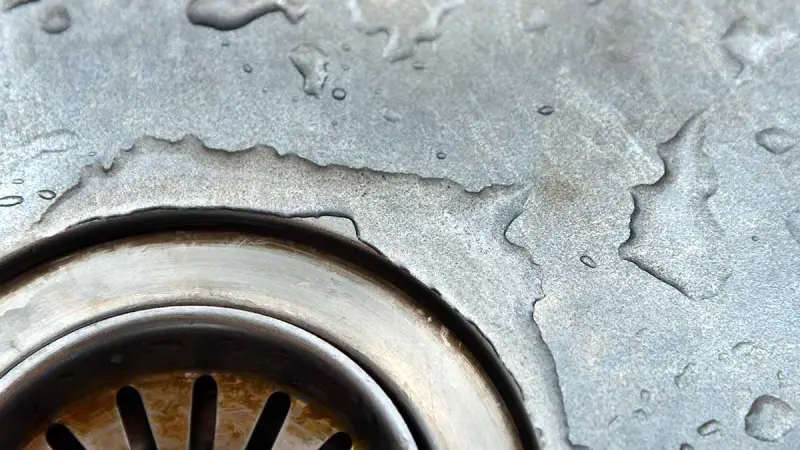
Equipment To Work With Stainless Steel Sink Rusting
| Equipment | Purpose |
|---|---|
| Rust Remover Spray | Designed specifically for removing rust from stainless steel sinks |
| Baking Soda | Used to create a paste for natural cleaning method |
| Vinegar | Used to create a natural cleaning solution and remove rust spots |
| Lemon | Used for natural cleaning method |
| Salt | Used for natural cleaning method |
| Soft-bristled Brush | Used to scrub the rust spot gently |
| Microfiber Cloth | Used for wiping down the sink and removing rust spots |
| Stainless Steel Cleaner | Specifically designed for removing rust from stainless steel sinks and protecting the surface |
It’s important to note that not all of these items are required for every method of removing rust from a stainless steel sink. For example, if using a rust remover spray, a soft-bristled brush and microfiber cloth may be all that is needed. If using a natural cleaning method, baking soda, vinegar, and a soft-bristled brush may be required.
Overall, having the right equipment on hand can make the process of removing rust from a stainless steel sink easier and more effective. Additionally, using the right equipment can help prevent damage to the sink and surrounding surfaces.
Step-by-Step Instructions On Solving Stainless Steel Sink Rusting
- Choose your method: Decide which method you want to use to remove the rust from your stainless steel sink. You can choose from rust remover sprays, natural cleaning methods using baking soda and vinegar or lemon and salt, or stainless steel cleaners.
- Gather your equipment: Make sure you have all the equipment you need, depending on the method you have chosen. This may include a soft-bristled brush, microfiber cloth, rust remover spray, baking soda, vinegar, lemon, salt, and/or stainless steel cleaner.
- Prep the area: Before you start cleaning, make sure the sink is empty and dry. This will help you see the rust spots more clearly and prevent any damage to other surfaces.
- Apply the cleaning solution: If you are using a rust remover spray, follow the instructions on the label. If you are using a natural cleaning method, create a paste using baking soda and water, or sprinkle salt on the rust spot and then use a lemon to scrub the area. If you are using a stainless steel cleaner, apply it directly to the rust spot.
- Scrub the rust spot: Use a soft-bristled brush to gently scrub the rust spot in a circular motion. Be careful not to apply too much pressure, as this can scratch the surface of the sink. For natural cleaning methods, you may need to use more elbow grease to remove the rust.
- Rinse and wipe: After scrubbing the rust spot, rinse the sink with water and then wipe it down with a microfiber cloth. This will help remove any remaining residue and prevent water spots.
- Repeat if necessary: Depending on the severity of the rust spot, you may need to repeat the cleaning process several times. Be patient and persistent, and the rust spot will eventually disappear.
By following these steps, you can effectively remove rust from your stainless steel sink and restore its original shine. Remember to choose the method that works best for you, gather all the necessary equipment, and take your time to get the best results. Good luck!
F.A.Q.
Can I use regular cleaning products to remove rust from my stainless steel sink?
No, regular cleaning products are not designed to remove rust from stainless steel sinks. You will need a rust remover spray, natural cleaning method using baking soda and vinegar or lemon and salt, or a stainless steel cleaner specifically designed for this purpose.
Will scrubbing the rust spot damage the surface of my stainless steel sink?
Scrubbing too hard or using the wrong type of brush can scratch the surface of your stainless steel sink. It’s important to use a soft-bristled brush and be gentle when scrubbing the rust spot to prevent damage to the surface.
How can I prevent rust from forming on my stainless steel sink in the future?
To prevent rust from forming on your stainless steel sink, make sure to wipe it down regularly to prevent water spots and buildup. Also, avoid leaving metal objects or harsh chemicals on the surface of the sink for extended periods of time.
How do I know if the rust spot is completely removed?
After scrubbing the rust spot, rinse the sink with water and wipe it down with a microfiber cloth. If the rust spot is still visible, you may need to repeat the cleaning process. Once the spot is no longer visible, your sink is rust-free.
Can I use bleach to remove rust from my stainless steel sink?
No, bleach is a harsh chemical that can damage the surface of your stainless steel sink. Stick to using rust remover sprays, natural cleaning methods, or stainless steel cleaners specifically designed for removing rust.
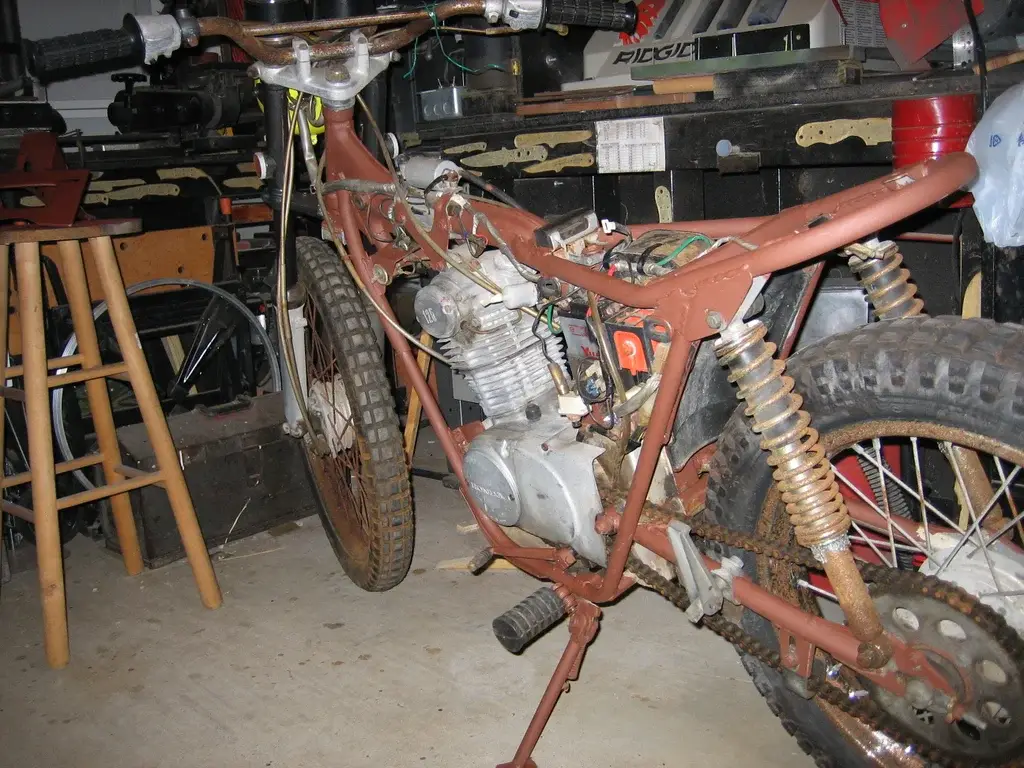
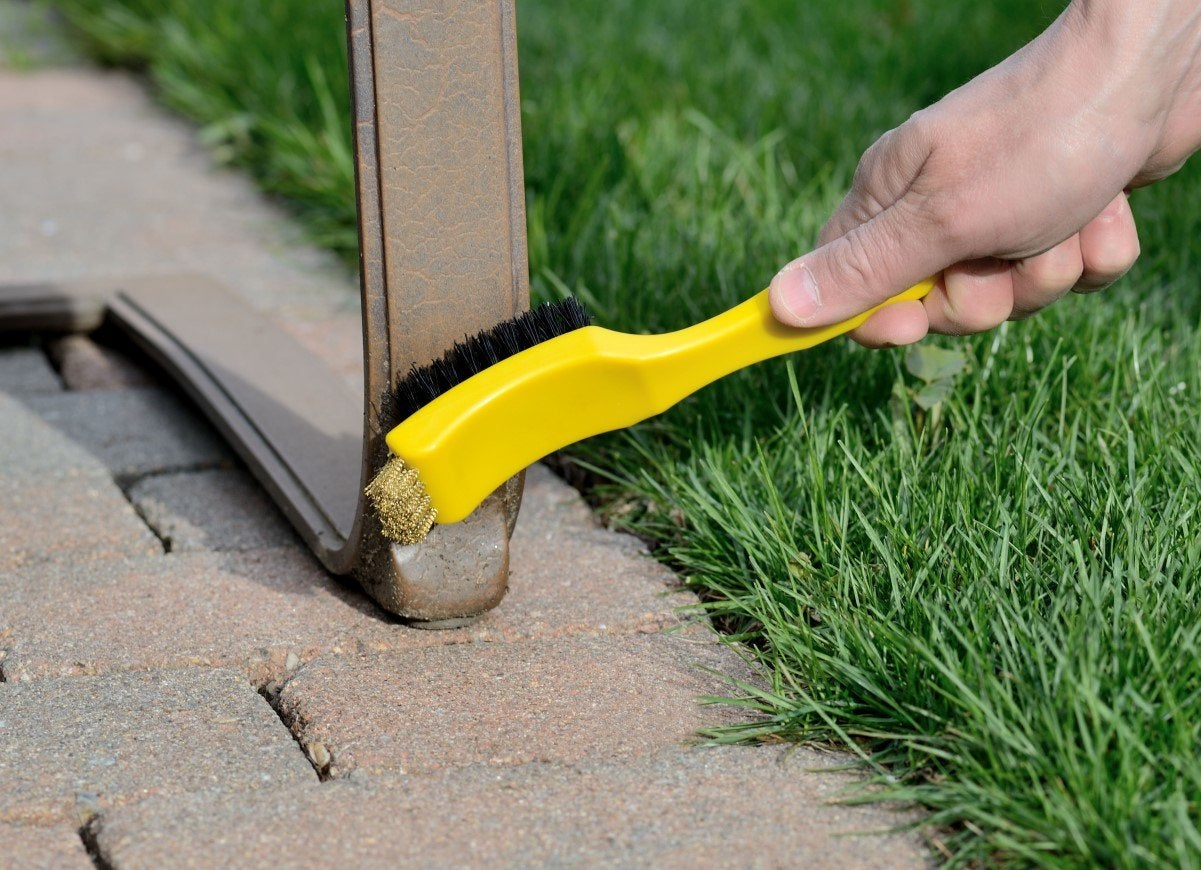
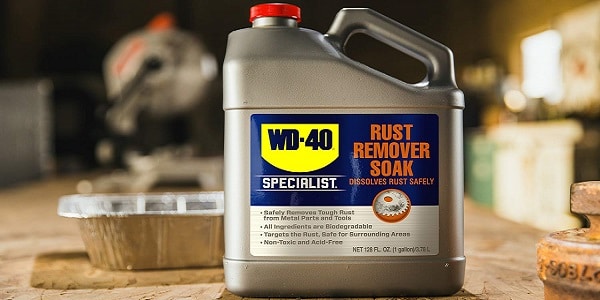
Leave a Reply